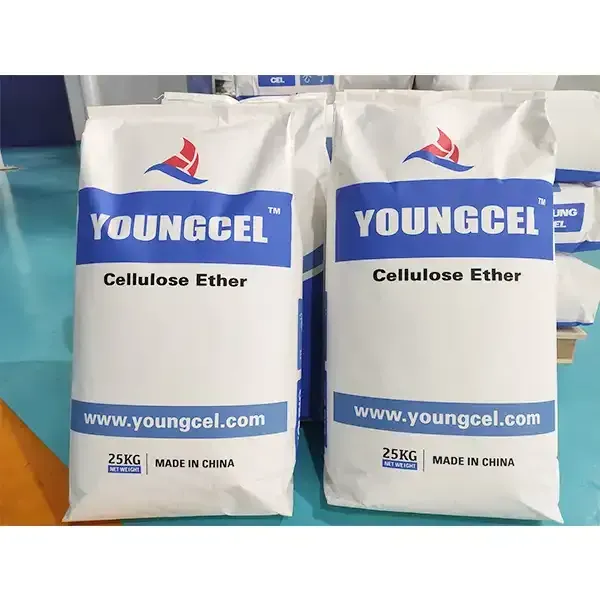Hydroxypropyl Methyl Cellulose (HPMC) A Versatile Polymer in Modern Applications
Hydroxypropyl Methyl Cellulose (HPMC) is a widely utilized cellulose ether that derives its significance from its remarkable properties and versatility in various industrial applications. As a non-ionic polymer, HPMC is primarily composed of cellulose, derived from plant materials, which undergoes chemical modification to enhance its solubility and functionality. Its unique characteristics make it an essential ingredient in a multitude of sectors, including pharmaceuticals, food, construction, and cosmetics.
Chemical Structure and Properties
The chemical structure of HPMC consists of a linear chain of glucose units, where some of the hydroxyl groups are substituted with hydroxypropyl and methyl groups. The degree of substitution affects the properties of HPMC, such as viscosity and solubility, which can be customized for specific applications. HPMC is known for its excellent film-forming ability, water retention, and thickening properties. These attributes make it an ideal candidate for use in formulations requiring stability and consistency.
Pharmaceutical Applications
In the pharmaceutical industry, HPMC plays a crucial role in drug delivery systems. It is commonly used as a binder in tablet formulations and as a coating agent that helps control the release of active ingredients. HPMC is valued for its biocompatibility and low toxicity, making it suitable for various oral, injectable, and topical formulations. Additionally, HPMC's viscosity and gel-forming properties contribute to the development of sustained-release formulations, which enhance therapeutic efficiency by regulating the release rate of the drug.
Its use extends to the production of hydrogels, which are critical in wound dressings and drug delivery systems. HPMC-based hydrogels can retain moisture and create a conducive environment for healing while providing controlled release of therapeutic agents. This characteristic underscores the polymer's versatility and importance in modern medicine.
Food Industry Utilization
In the food industry, HPMC serves multiple purposes, primarily as a thickener, emulsifier, and stabilizer. Its ability to bind water enhances the texture and viscosity of various food products while improving their shelf life. HPMC is often found in sauces, dressings, and processed foods, contributing to a desirable mouthfeel and consistency.
hydroxypropyl methyl cellulose hpmc

Moreover, HPMC is beneficial in gluten-free formulations due to its binding properties, helping to mimic the texture provided by gluten. This is increasingly relevant in the growing market for gluten-free products, where maintaining sensory quality is challenging. Additionally, HPMC is recognized as a food additive with E number E464, and it is considered safe for consumption by regulatory agencies, adding to its appeal in food applications.
Construction Industry Contributions
The construction industry also recognizes the utility of HPMC, particularly in the formulation of cement-based systems, adhesives, and mortar. Its water retention properties enhance the workability of mixtures and prevent early drying, ensuring proper adhesion and durability of construction materials. HPMC provides improved flexibility and reduced cracking, leading to enhanced performance of finished structures.
Moreover, HPMC is environmentally friendly, contributing to the formulation of greener construction materials. As the industry moves towards sustainable practices, the use of biodegradable additives like HPMC is gaining traction, aligning with modern preferences for eco-friendly solutions.
Cosmetics and Personal Care
In the realm of cosmetics and personal care, HPMC is commonly utilized as a thickening agent, film former, and emulsifier in various formulations, including lotions, creams, and gels. Its ability to stabilize emulsions and improve texture makes it a popular choice among formulators seeking high-performance products. HPMC enhances the spreadability and sensory experience of personal care formulations, contributing to consumer satisfaction.
Conclusion
The versatility of Hydroxypropyl Methyl Cellulose (HPMC) makes it an invaluable polymer across various industries. Its unique properties, including water retention, thickening capabilities, and biocompatibility, establish HPMC as a multifunctional ingredient essential for modern applications. As industries continue to innovate and seek sustainable solutions, the significance of HPMC is likely to grow, paving the way for further advancements in formulation science and technology. With its broad spectrum of uses—from pharmaceuticals to food and cosmetics—HPMC exemplifies the power and potential of synthetic polymers in our daily lives.
-
Rdp Powder: Key Considerations for Wholesalers in the Building Materials IndustryNewsJul.08,2025
-
Key Considerations for Wholesalers: Navigating the World of Hpmc - Based ProductsNewsJul.08,2025
-
Hpmc Detergent: Key Considerations for WholesalersNewsJul.08,2025
-
Key Considerations for Wholesalers: China Hpmc For Tile Adhesive, Coating Additives, Concrete Additives, and MoreNewsJul.08,2025
-
Crucial Considerations for Wholesalers: Navigating the World of Construction MaterialsNewsJul.08,2025
-
Key Considerations for Wholesalers Sourcing Additive For Cement, Additive For Concrete, Additive For Putty from Additive Manufacturer Shijiazhuang Gaocheng District Yongfeng Cellulose Co., Ltd.NewsJul.08,2025




